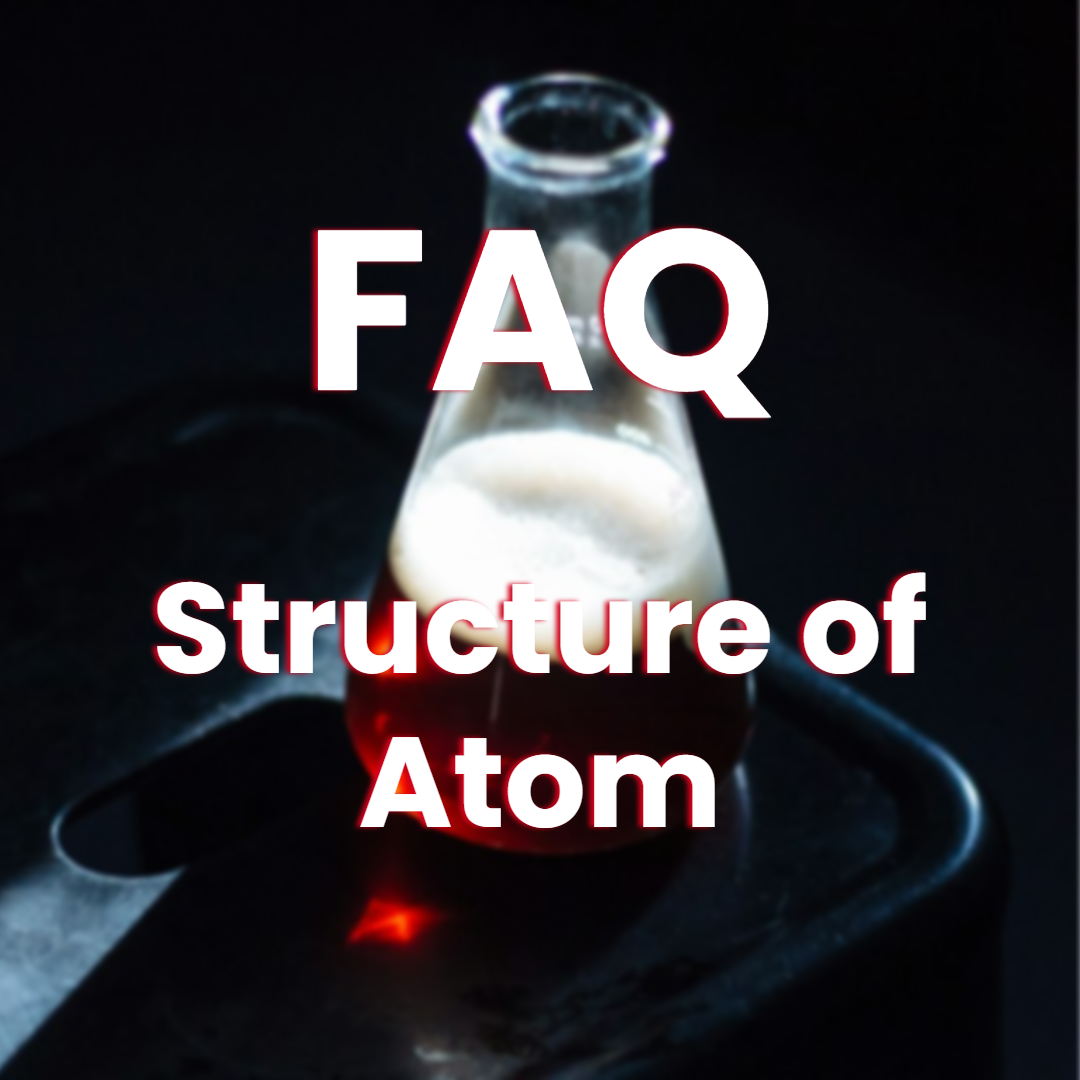An atom is the basic building block of matter, consisting of a nucleus containing protons and neutrons, surrounded by a cloud of electrons. Atoms are the smallest units of an element that still retain the properties of that element.
Key components of an atom include:
Nucleus: The nucleus is located at the center of the atom and contains positively charged protons and electrically neutral neutrons. Protons have a positive charge, while neutrons have no charge (they are neutral).
Electrons: Electrons are negatively charged particles that orbit the nucleus in regions called electron shells or energy levels. Electrons are much smaller and lighter than protons and neutrons.
Protons: Protons are positively charged particles found in the nucleus of an atom. The number of protons in the nucleus determines the atomic number of the atom, which in turn determines the identity of the element. For example, all atoms of hydrogen have one proton in their nucleus, while all atoms of carbon have six protons.
Neutrons: Neutrons are neutral particles found in the nucleus of an atom. They contribute to the mass of the atom but do not affect its chemical properties (since they have no charge).
Atoms are typically electrically neutral, meaning that the number of protons in the nucleus equals the number of electrons surrounding the nucleus. However, atoms can gain or lose electrons, becoming ions with a net positive or negative charge.
Atoms combine to form molecules through chemical bonding, where atoms share or transfer electrons to achieve a stable configuration. The arrangement of atoms and the types of chemical bonds present determine the properties of substances and molecules.
Understanding the structure and behavior of atoms is fundamental to the study of chemistry and various other branches of science, as it provides insights into the composition and behavior of matter at the atomic level.
The fundamental particles of an atom are protons, neutrons, and electrons. These particles make up the structure of an atom and determine its properties. Here’s a brief overview of each:
Protons: Protons are positively charged particles found within the nucleus of an atom. They have a relative mass of approximately 1 atomic mass unit (amu) and a fundamental charge of +1. The number of protons in an atom’s nucleus determines its atomic number, which in turn defines the identity of the element. For example, all hydrogen atoms have one proton, all carbon atoms have six protons, and so on.
Neutrons: Neutrons are electrically neutral particles found within the nucleus of an atom. They have a relative mass similar to protons, approximately 1 amu, but they carry no electrical charge (they are neutral). Neutrons help stabilize the nucleus by counteracting the repulsive forces between positively charged protons. The number of neutrons in an atom’s nucleus can vary, resulting in different isotopes of an element.
Electrons: Electrons are negatively charged particles that orbit the nucleus of an atom in specific energy levels or electron shells. They have a much smaller mass compared to protons and neutrons, approximately 1/1836 amu, but they carry a fundamental charge of -1. Electrons are responsible for the majority of an atom’s volume but contribute very little to its overall mass. The number of electrons in an atom typically equals the number of protons, ensuring that the atom is electrically neutral.
These three fundamental particles collectively determine the properties of an atom, including its size, mass, stability, and chemical behavior. The arrangement of these particles within an atom’s structure gives rise to the unique characteristics of each element and governs how atoms interact with one another to form molecules and compounds.
The concept of the atom has been around for thousands of years, but it was the ancient Greek philosopher Democritus who first proposed the idea of the atom around 400 BC. However, the modern understanding of the atom, with its nucleus and electrons, was developed by scientists such as Ernest Rutherford, Niels Bohr, and others in the early 20th century.
Here are some key figures in the history of atomic theory:
Democritus (circa 460–370 BCE): Ancient Greek philosopher Democritus is often credited with proposing the idea of the atom around the 5th century BCE. He suggested that all matter is composed of indivisible and indestructible particles called “atomos,” meaning “uncuttable” or “indivisible” in Greek.
John Dalton (1766–1844): Dalton, an English chemist, is considered the father of modern atomic theory. In the early 19th century, Dalton proposed his atomic theory, which included several key principles, such as the idea that atoms of different elements have different masses and that compounds are formed by the combination of atoms in simple numerical ratios.
J.J. Thomson (1856–1940): Thomson, a British physicist, discovered the electron in 1897 through his experiments with cathode rays. His discovery led to the development of the “plum pudding” model of the atom, in which electrons are embedded within a positively charged sphere.
Ernest Rutherford (1871–1937): Rutherford, a New Zealand-born physicist, conducted the famous gold foil experiment in 1909, which led to the discovery of the atomic nucleus. His findings contradicted the plum pudding model and led to the development of the nuclear model of the atom, in which the atom is mostly empty space with a small, dense nucleus at the center.
Niels Bohr (1885–1962): Bohr, a Danish physicist, proposed the Bohr model of the atom in 1913, which introduced the concept of quantized energy levels for electrons within the atom. His model successfully explained the line spectra of hydrogen and laid the groundwork for modern quantum theory.
These are just a few of the scientists who made significant contributions to our understanding of the atom. The discovery and development of atomic theory have been a collaborative effort over many centuries, involving contributions from scientists, philosophers, and researchers from around the world.
The proton was discovered by Ernest Rutherford in 1917 through his famous gold foil experiment.
In 1919, Rutherford and his collaborators, Hans Geiger and Ernest Marsden, conducted the famous gold foil experiment, also known as the Rutherford scattering experiment. In this experiment, they bombarded a thin sheet of gold foil with alpha particles (positively charged helium nuclei). According to the prevailing model at the time, the “plum pudding” model proposed by J.J. Thomson, they expected the alpha particles to pass through the gold foil with minimal deflection.
However, the results of the experiment were unexpected and revolutionary. While most alpha particles did pass through the foil as predicted, some were deflected at large angles, and a few even bounced straight back. This observation led Rutherford to conclude that the atom has a small, dense nucleus at its center, where most of its mass and positive charge are concentrated. He proposed that these alpha particle deflections were caused by collisions with the positively charged nucleus of the gold atoms.
Based on this interpretation, Rutherford inferred the existence of a positively charged particle within the atomic nucleus, which he called the “proton.” He proposed that the proton carries a positive electrical charge equal in magnitude to the negative charge of the electron but with opposite polarity. Rutherford’s discovery of the proton represented a significant advancement in our understanding of atomic structure and laid the foundation for the development of modern nuclear physics.
The electron was discovered by J.J. Thomson in 1897. He conducted experiments with cathode rays in a vacuum tube, leading to the identification of the electron as a fundamental subatomic particle.
In 1897, Thomson conducted experiments using cathode ray tubes, which were evacuated glass tubes with electrodes at each end. When a high voltage was applied across the electrodes, a stream of particles was observed to travel from the cathode (negative electrode) to the anode (positive electrode) within the tube. These particles were later termed “cathode rays.”
Through a series of experiments involving cathode rays, Thomson was able to determine several important properties of these particles:
Negatively charged particles: Thomson found that cathode rays were deflected by electric and magnetic fields, indicating that they were composed of negatively charged particles.
Mass-to-charge ratio: By measuring the deflection of cathode rays in electric and magnetic fields, Thomson was able to determine the ratio of their charge to mass. This ratio was found to be much smaller than that of any known atom, suggesting that cathode rays were composed of particles smaller than atoms.
Independence of material: Thomson demonstrated that cathode rays were produced regardless of the material used for the cathode, indicating that they were a fundamental property of the cathode ray tube itself rather than a property of the material.
Based on these experimental findings, Thomson proposed the existence of a new fundamental particle, which he named the “electron.” He suggested that electrons were negatively charged, subatomic particles with a much smaller mass than that of an atom. Thomson’s discovery of the electron revolutionized our understanding of atomic structure and laid the foundation for the development of modern atomic and particle physics.
The neutron was discovered by Sir James Chadwick in 1932 through his experiments with beryllium and paraffin wax, which led to the identification of the neutron as a neutral subatomic particle.
Chadwick’s discovery came as a result of his experiments with beryllium and other light elements bombarded with alpha particles (helium nuclei). He observed that the resulting radiation included a neutral particle with a mass slightly greater than that of the proton. This neutral particle had properties distinct from those of protons and electrons, suggesting the existence of a new fundamental particle.
Through further experiments and analysis, Chadwick conclusively demonstrated the existence of this previously unknown particle, which he named the neutron due to its lack of electrical charge. He found that neutrons are electrically neutral particles with a mass similar to that of protons, making them an essential component of atomic nuclei.
Chadwick’s discovery of the neutron provided crucial insights into the structure of the atomic nucleus and helped to explain the stability and behavior of various isotopes of chemical elements. Neutrons play a crucial role in nuclear reactions, such as nuclear fission and nuclear fusion, and have applications in fields ranging from nuclear energy and medicine to materials science and particle physics.
The charge of an atom is neutral, meaning that it has an equal number of positively charged protons and negatively charged electrons. Therefore, the overall charge of an atom is zero.
The charge of an electron is fundamental constant in physics and is denoted by the symbol e. The charge of an electron is approximately −1.602×10−19 coulombs (C), which means it is negative. This value represents the magnitude of the charge of an electron.
The charge of a proton is approximately 1.602 x 10-19 coulombs. This value is fundamental to the definition of the coulomb, which is the SI unit of electric charge.
4.8 x 10-10 esu
4.8 x 10-10 esu
Properties | Electron | Proton | Neutron |
Symbol | e 0-1 | p 1+1 | n 10 |
Mass | 9.108 x 10-28g | 1.67 x 10-24g | 1.67 x 10-24g |
Amount of Charge | 4.8 x 10-10esu | 4.8 x 10-10esu | 0 |
Nature of Charge | Negative charge | Positive charge | Neutral |
Location | Outsides the nucleus | In the nucleus | In the nucleus |
Discovered by | J.J. Thomson | E. Goldstein | J. Chadwick |
Discovered during | From Cathode Ray | From Canal Ray | Artificial transmutation by bombarding Beryllium by a- particle |
9.108 x 10-28g
1.67 x 10-24g
1.67 x 10-24g
Outsides the nucleus in specific orbits or shells.
In the nucleus
In the nucleus
- All matter of universe is composed of very small particles called atoms.
- Atoms are indestructible; they cannot be sub-divided, created or destroyed.
- Atoms of the same element are similar to one another and equal in weights.
- Atoms of different elements have different properties and different weights.
- Chemical combination results from the union of atoms in simple numerical proportions.
A discharge tube, also known as a vacuum tube or discharge lamp, is a sealed glass tube containing gas or vapor at low pressure, often with electrodes at each end. When a voltage is applied across the electrodes, it ionizes the gas or vapor inside the tube, leading to the emission of light or other electromagnetic radiation.
Discharge tubes have various applications in physics, electronics, and lighting. Some common types of discharge tubes include:
Fluorescent Tubes: Fluorescent tubes contain mercury vapor and a small amount of argon gas at low pressure. When an electric current passes through the tube, it ionizes the gas, causing the mercury vapor to emit ultraviolet (UV) light. The inner surface of the tube is coated with a phosphor material that absorbs the UV light and re-emits it as visible light, producing the illumination that we see.
Neon Tubes: Neon tubes contain neon gas at low pressure. When a high voltage is applied across the electrodes, it ionizes the neon gas, causing it to emit light. Neon tubes are commonly used for signage and decorative lighting due to their vibrant colors.
Gas Discharge Tubes (GDTs): Gas discharge tubes are used as surge protectors in electronic circuits. They contain a gas, such as neon or argon, at low pressure. When a high voltage spike occurs in the circuit, the gas ionizes, providing a low-resistance path for the excess current to bypass sensitive components, thus protecting them from damage.
Cathode Ray Tubes (CRTs): Cathode ray tubes were once widely used in television and computer monitors. They contain a vacuum with a cathode and anode at opposite ends. When a voltage is applied across the electrodes, electrons are emitted from the cathode and accelerated towards the anode, producing a beam of electrons. This beam is then deflected by magnetic or electric fields to create an image on a phosphor-coated screen.
Discharge tubes have played a significant role in the development of technology and have various practical applications in lighting, electronic devices, and scientific research. However, their use has declined in some areas with the advent of more efficient and compact solid-state devices such as light-emitting diodes (LEDs) and liquid crystal displays (LCDs).
The discharge tube filled with a gas is connected to a vacuum pump in order to reduce the pressure. The electrodes are connected to a source of high voltage of 10000 volts.
- Under normal pressure (1 atm), nothing is observed.
- At 10-2 atm, the gas is found to emit light and the colour of the light depends upon the nature of the gas.
- At 10-4 atm, the emission of light ceases but the wall of the discharge tube opposite to the cathode starts glowing with a faint greenish light called fluorescence. This is due to the bombardment on the wall by cathode rays.
Cathode rays are streams of electrons that are emitted from the cathode (negatively charged electrode) in a vacuum tube when high voltage is applied. They were the forerunners of electron beams and played a significant role in the discovery of electrons.
Cathode rays were discovered by Sir William Crookes in 1870.
- It travels in a straight line, can caste shadow, consist of negatively charged particles and can exert mechanical pressure.
- It can produce heating effect, can ionise the gas through which they pass, can produce X-rays when strike on the surface of hard metals like tungsten, copper, molybdenum etc.
- It is deflected by electric and magnetic field and can pass through thin foils of metals like Al.
- It affects the photographic plate. This is called fogging.
- The e/m ratio of the particles constituting the cathode rays does not depend on the nature of the gas or the material of the cathode.
Anode rays are positively charged rays that are produced when a high voltage is applied between the electrodes in a discharge tube. These rays flow from the anode (positively charged electrode) towards the cathode (negatively charged electrode). Anode rays are also called positive rays and were instrumental in the discovery of protons.
Anode rays, also known as positive rays, were discovered by the German physicist Eugen Goldstein in 1886. Goldstein observed these rays while studying the behavior of cathode rays in a partially evacuated tube. Anode rays are positively charged particles that move in the opposite direction of cathode rays when a high voltage is applied across the electrodes in a gas-discharge tube. These particles are now understood to be positively charged ions. The discovery of anode rays contributed to the understanding of the behavior of charged particles in electric fields and furthered the development of atomic physics.
- It travels in a straight line and can caste shadow.
- It can exert mechanical pressure and is deflected by electric and magnetic field.
- The anode rays are formed by the expulsion of electrons from the atoms of the gas in the space between anode and cathode.
- The e/m ratio of the particles constituting the anode rays depend on the nature of the gas.
Cathode rays and anode rays are two types of charged particle streams observed in gas-discharge tubes. Here are the key differences between them:
Nature of Charged Particles:
- Cathode rays consist of negatively charged particles, which we now know as electrons.
- Anode rays, also known as positive rays, consist of positively charged particles, which are typically ions generated from gas atoms within the tube.
Direction of Motion:
- Cathode rays move from the cathode (negative electrode) towards the anode (positive electrode) when a high voltage is applied across the electrodes.
- Anode rays move from the anode (positive electrode) towards the cathode (negative electrode) when a high voltage is applied.
Charge:
- Cathode rays are negatively charged.
- Anode rays are positively charged.
Discovery:
- Cathode rays were discovered by Sir William Crookes in 1879.
- Anode rays were discovered by Eugen Goldstein in 1886.
Composition:
- Cathode rays are composed of electrons, which are fundamental particles with a negative charge.
- Anode rays are composed of positively charged ions, typically formed when gas atoms within the tube lose electrons.
Behavior in Electric Field:
- Cathode rays are deflected away from a negatively charged object and towards a positively charged object in an electric field.
- Anode rays are deflected towards a negatively charged object and away from a positively charged object in an electric field.
According to this model,
- An atom is considered to be a sphere of uniform positive charge and electrons are embedded into it.
- The total positive charge is equal to the total negative charge.
- The mass of an atom is considered to be uniformly distributed.
In Rutherford’s gold foil experiment, a thin gold foil was bombarded with alpha particles emitted by a radioactive source. The experiment aimed to understand the structure of the atom by observing how alpha particles interacted with the atoms in the foil.
The key observations from the experiment were:
Most of the alpha particles passed through the gold foil without any significant deflection. This indicated that most of the space within the atom is empty, as the majority of alpha particles passed through unimpeded.
Some alpha particles were deflected at small angles, suggesting interactions with the positively charged nucleus of the atom. This implied that the positive charge and most of the mass of the atom were concentrated in a small, dense nucleus.
Surprisingly, a small fraction of the alpha particles were deflected at large angles, and a few even bounced directly backward. This extreme deflection suggested that the positively charged nucleus was much denser and concentrated than previously thought.
These observations led Rutherford to propose the nuclear model of the atom, where the atom consists mostly of empty space with a small, dense, positively charged nucleus at the center, around which negatively charged electrons orbit. This model replaced the previously accepted “plum pudding” model proposed by J.J. Thomson.
The gold foil was chosen for its malleability, allowing it to be hammered into a thin layer just a few atoms thick. This thinness was crucial for observing the significant deflections of the alpha particles, as a thicker foil would not have allowed the particles to penetrate and interact with individual atoms as effectively.
- Most of the a- particles passed through the foil without any deflection from their path.
- A few of them were deflected at some angles.
- Very few (1 in 10000) turned back on their original path.
- Most part of the atom is hollow.
- The entire mass of the atom is concentrated in a small area of positive charge.
- Electrons revolve around the nucleus at large distance from it.
Nuclear sizes are typically expressed in a unit called the fermi (symbol: fm), which is equivalent to 10-15 meters. The fermi is commonly used to describe the size of atomic nuclei due to their small dimensions.
- Atom consists of two parts- Nucleus and extra nuclear part.
- Almost all the mass and entire positive charge of an atom is concentrated into its centre called nucleus.
- Electrons moves at very high speeds around the nucleus in specific orbits.
- According to Maxwell, whenever a charged body revolves it gives out radiations and loses energy. Thus electron which carries negative charge, revolve around the nucleus should continuously emit radiations and loses energy. As a result of this the electron follows a spiral path and collides with the nucleus.
- When gases under pressure are subjected to electric discharge, line spectrum is produced. Rutherford fails to explain this.
The invisible radiation caused by the combined effect of electric and magnetic field is called electromagnetic radiation.
Electromagnetic radiation consists of various types of waves with different wavelengths and frequencies. The electromagnetic spectrum includes the following types of radiation, listed in order of increasing frequency and decreasing wavelength:
- Radio waves: Longest wavelength electromagnetic radiation used in communication technologies, such as radios and cell phones.
- Microwaves: Slightly higher frequency and shorter wavelength than radio waves, used for cooking (microwave ovens) and communication (satellite communication).
- Infrared radiation: Infrared radiation has longer wavelengths than visible light and is commonly used in heating applications and infrared photography.
- Visible light: The portion of the electromagnetic spectrum that is visible to the human eye, consisting of the colors of the rainbow (ROYGBIV).
- Ultraviolet (UV) radiation: Has higher frequencies and shorter wavelengths than visible light, known for causing sunburn and used in sterilization and fluorescent lights.
- X-rays: Higher frequency and shorter wavelength than UV radiation, X-rays are used in medical imaging and security scanning.
- Gamma rays: The highest frequency and shortest wavelength type of electromagnetic radiation, emitted by radioactive materials and used in cancer treatment and sterilization.
Among the electromagnetic waves, radio waves have the longest wavelengths. They typically range from about 1 millimeter to over 100 kilometers in wavelength. Radio waves are used in various applications such as communication, broadcasting, radar, and remote sensing. They are well-suited for long-distance transmission because of their ability to diffract around obstacles and follow the curvature of the Earth.
Gamma rays have the shortest wavelength among all the types of electromagnetic waves. Gamma rays have extremely high frequencies and very short wavelengths, making them the most energetic and penetrating type of electromagnetic radiation.
The electromagnetic wave with the highest frequency is gamma rays. Gamma rays have the shortest wavelengths and the highest frequencies in the electromagnetic spectrum. They are produced by the most energetic processes in the universe, such as nuclear reactions and certain types of radioactive decay. Gamma rays are used in various applications, including medical imaging, cancer treatment, and sterilization.
The electromagnetic wave with the lowest frequency is radio waves. Radio waves have the longest wavelengths and the lowest frequencies in the electromagnetic spectrum. They are used for various purposes, including communication, broadcasting, radar, and remote sensing.
Within the visible light spectrum, violet light has the shortest wavelength. As you move from red to violet light in the visible spectrum, the wavelengths decrease, with violet light having the shortest wavelength among the visible colors.
The visible light with the longest wavelength is red light. As you move from violet to red light in the visible spectrum, the wavelengths increase, with red light having the longest wavelength among the visible colors.
Electromagnetic waves are widely used in various areas of chemistry for analysis, identification, and research. Some applications of electromagnetic waves in the study of chemistry include:
- Spectroscopy: Different types of spectroscopy techniques use electromagnetic waves to study the interaction of matter with electromagnetic radiation. For example, infrared spectroscopy, nuclear magnetic resonance (NMR) spectroscopy, and UV-Vis spectroscopy provide valuable information about the structure and composition of chemicals.
- X-ray crystallography: X-ray diffraction techniques use X-rays to determine the atomic and molecular structure of crystalline materials. This method is essential for determining the three-dimensional arrangement of atoms in solid-state compounds, proteins, and other molecules.
- Mass spectrometry: Mass spectrometry involves ionizing molecules and analyzing the mass-to-charge ratio of ions. Electromagnetic waves are used to ionize molecules and separate ions based on their mass, providing information about molecular weight and structural composition.
- Magnetic resonance imaging (MRI): MRI is a powerful imaging technique that utilizes NMR principles to generate detailed images of internal bodily structures. It is widely used in the field of medical chemistry to visualize tissues and organs for diagnostic purposes.
- Microwave chemistry: Microwave radiation is used in microwave-assisted chemistry to facilitate chemical reactions by providing rapid and efficient heating. This technique can enhance reaction rates, improve yields, and reduce reaction times compared to traditional heating methods.
- Ultraviolet-visible (UV-Vis) spectroscopy: UV-Vis spectroscopy is commonly used to determine the electronic structure and concentration of compounds based on their absorption or emission of UV or visible light. This technique is valuable for analyzing the properties of chromophores in chemical compounds.
Overall, electromagnetic waves have numerous applications in chemistry, enabling scientists to study molecular structure, analyze chemical composition, and investigate the behavior of chemical substances in various environments.
Wavelength is the distance between two consecutive points on a wave that are in phase with each other.
Wavelength is typically denoted by the Greek letter lambda (λ) and is measured in units of length, such as meters, nanometers, or micrometers, depending on the scale of the wave. Shorter wavelengths correspond to higher frequencies, while longer wavelengths correspond to lower frequencies.
Frequency is the number of complete cycles or oscillations of a wave that occur in a given unit of time. It is a fundamental property of waves and is measured in hertz (Hz), where 1 Hz represents one cycle per second.
Amplitude is the maximum displacement or distance from the equilibrium position of a wave. In simpler terms, it measures the “height” or “size” of a wave.
For a transverse wave (such as electromagnetic waves like light or water waves), amplitude is measured from the equilibrium position (the rest position) to the crest (highest point) or trough (lowest point) of the wave. It represents the maximum amount of displacement from the rest position.
In the case of a longitudinal wave (such as sound waves), amplitude measures the maximum compression or rarefaction of the medium through which the wave travels. It represents the maximum variation in pressure or density of the medium caused by the wave.
Amplitude is typically denoted by the symbol A and is measured in units such as meters (m) for spatial waves or pascals (Pa) for pressure waves. The greater the amplitude of a wave, the more energy it carries.
Number of waves per unit length is called wave number. It is the reciprocal of the wavelength. Its unit are m-1 , cm-1
pm = 10-10cm = 10-12m
Ǻ =10-8cm = 10-10m
nm = 10-7cm = 10-9m
The photoelectric effect is a phenomenon where electrons are emitted from a material or surface when it is exposed to light or electromagnetic radiation of sufficient energy. This effect was first observed and explained by Albert Einstein in 1905 and played a pivotal role in the development of quantum mechanics.
Photoelectrons are electrons that are emitted from a material (such as a metal) when it is exposed to electromagnetic radiation, typically in the form of light or ultraviolet radiation. The emission of these electrons is a result of the photoelectric effect, where photons (particles of light) transfer their energy to electrons within the material, causing them to be ejected.
The threshold frequency is the minimum frequency of incident electromagnetic radiation (typically light or ultraviolet radiation) required to initiate the photoelectric effect in a material. Below this threshold frequency, no electrons are emitted from the material, regardless of the intensity of the incident radiation.
The work function, denoted by the symbol Φ (phi), is a fundamental property of a material that represents the minimum amount of energy required to remove an electron from the surface of the material and bring it to a point just outside the material, where its kinetic energy is zero.
hν = hνo + ½ mv2
Where:
νo = Threshold frequency
mv2 = kinetic energy of the emitted electrons
hν = Energy of the incedent ray
hνo = Threshold Energy or work function
An emission spectrum is a characteristic pattern of electromagnetic radiation emitted by a substance when it is excited (typically by heating or by passing an electrical current through it). This emission occurs as electrons in the substance move from higher energy levels to lower energy levels, releasing energy in the form of photons.
An absorption spectrum is a characteristic pattern of electromagnetic radiation absorbed by a substance when it is exposed to light or other forms of electromagnetic radiation. In an absorption spectrum, dark lines or bands appear at specific wavelengths, indicating the wavelengths of light that have been absorbed by the substance. These dark lines correspond to the wavelengths of light that are missing from the transmitted or reflected light.
- Radiant energy is not emitted or absorbed continuously; on the contrary the radiant energy is absorbed or emitted by a body discontinuously in the form of small packets of energy known as quanta. For light one quantum of energy is called photon.
- The amount of energy associated with a quantum of radiation is directly proportional to its frequency.
E α ν or E = hν
- A body can emit or absorb energy only in terms of whole number multiples of quantum. E = nhν
- The electrons move around the nucleus in certain specifically permitted circular orbits called energy levels or energy states. An electron in a particular energy level is associated with a definite amount of energy. While moving in a particular level, it neither absorbs nor loses energy.
- Only those energy levels are permitted in which the angular momentum of an electron is an integral multiple of h/2π .
mvr = nh/2π
- Electron absorbs energy when it jumps from lower to higher energy level and emits energy when it moves from higher to lower levels. The energy gained or lost is equal to the difference of the energies of the two transitions.
∆E = E2 – E1 = hν = hc/λ
- An atom is made up of two parts:
- Nucleus: It is situated at the centre of the atom. It is made up of protons and neutrons. Protons and neutrons are collectively called nucleons. The main mass of an atom is mainly due to the nucleus.
- Orbits: Electrons revolve around the nucleus in specific path called orbits or shells.
- Maximum number of electrons in each shells: 2n2
Shell Number | Name | Maximum no of electrons |
1 | K | 2 |
2 | L | 8 |
3 | M | 18 |
4 | N | 32 |
- Atomic number: It is the number of protons present in the nucleus.
- Mass number: Sum total of the number of protons and neutrons present inside the nucleus.
- The last shell of an atom is called valence shell. The electrons which remain in it are called valence electrons.
- The second last shell is called penultimate shell. The third last shell is called antepenultimate shell.










